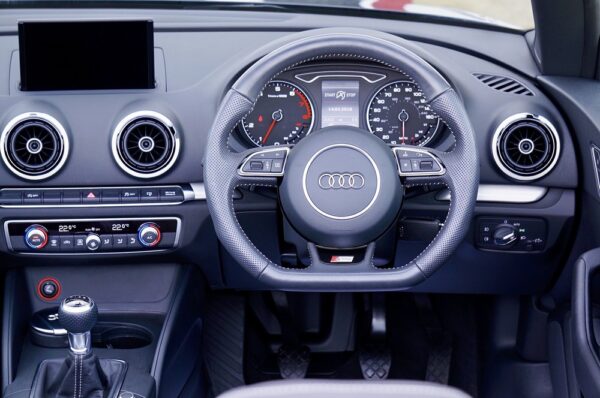In today’s fast-paced world, safety on the road is paramount. With the ever-increasing number of vehicles on the road, accidents and collisions have become more common than ever. Fortunately, technology has come to the rescue, providing us with innovative solutions to enhance our safety while driving. One such solution is installing a rear camera in your car. In this comprehensive guide, we will walk you through the process of installing a rear camera in your vehicle, ensuring you have a clear view behind and a safer driving experience.
Why Install a Rear Camera in Your Car?
Before we delve into the installation process, let’s understand why installing a rear camera is a wise decision for any vehicle owner. A rear camera, also known as a backup camera or reversing camera, offers several benefits:
[wcpcsu id=”12867″]
- Enhanced Safety: The primary purpose of a rear camera is to provide you with a clear view of the area behind your car when reversing. This eliminates blind spots and significantly reduces the risk of accidents, especially in crowded parking lots or tight spaces.
- Easy Parking: Parallel parking and parking in tight spots can be challenging for even the most experienced drivers. A rear camera simplifies the process by giving you a visual aid, allowing you to park with confidence and precision.
- Preventing Accidents: Rear cameras are particularly effective in preventing accidents involving pedestrians, cyclists, or objects that might be in your car’s path when reversing.
- Resale Value: Many modern vehicles come equipped with rear cameras, making them a sought-after feature in the used car market. By installing one, you can potentially increase your vehicle’s resale value.
- Reduced Insurance Costs: Some insurance companies offer discounts for vehicles equipped with safety-enhancing features like rear cameras, which can lead to reduced insurance premiums.
Now that you understand the importance of installing a rear camera let’s get into the nitty-gritty of the installation process.
Installing Your Rear Camera
Step 1: Gather Your Tools and Materials
Before you begin, make sure you have the following tools and materials ready:
- Rear camera kit
- Screwdriver set
- Wire strippers
- Wire connectors
- Crimping tool
- Power drill
- Fish tape or coat hanger
- Electrical tape
- Mounting hardware
- Vehicle-specific wiring harness (if required)
Step 2: Choose a Suitable Location
Decide where you want to mount your rear camera. It should be positioned in a way that provides an unobstructed view of the area behind your vehicle. Common locations include just above the license plate or on the rear bumper. Ensure it is securely fastened.
Step 3: Route the Camera Wiring
Carefully route the camera’s wiring from the rear of your vehicle to the front. You may need to remove interior panels or trim pieces to conceal the wires. A fish tape or coat hanger can be handy for guiding wires through tight spaces.
Step 4: Connect the Wiring
Connect the camera’s power cable to your vehicle’s reverse light wiring. This step ensures that the camera activates when you shift into reverse gear. Use wire connectors and a crimping tool to secure the connections. Remember to ground the camera’s black wire to a suitable metal surface.
Step 5: Connect to the Display Unit
Run the camera’s video cable from the rear to the front of your vehicle, following the same path as the power cable. Connect the video cable to the display unit, which is typically a screen on your dashboard or rearview mirror. Secure any loose wires with electrical tape.
Step 6: Test the System
Before finalizing the installation, test the rear camera system to ensure it functions correctly. Shift your car into reverse, and the camera feed should appear on the display unit. Verify that the image is clear and that there are no issues with the connections.
Step 7: Secure and Conceal Wires
Once you are satisfied with the camera’s performance, secure and conceal all wires and cables. Use zip ties or clips to prevent loose wires from interfering with your driving or getting caught on moving parts.
Step 8: Final Adjustments
Make any necessary adjustments to the camera’s position and angle to ensure you have the best view possible. Some rear cameras come with adjustable mounting brackets to facilitate this.
Step 9: Enjoy Enhanced Safety
With your rear camera successfully installed, you can now enjoy the benefits of enhanced safety and convenience while driving and parking your vehicle.
Conclusion
Installing a rear camera in your car is a smart investment that not only enhances your safety on the road but also simplifies everyday tasks like parking. With this step-by-step guide, you can tackle the installation process with confidence and enjoy the peace of mind that comes with having a clear view behind your vehicle. Don’t wait; make your driving experience safer and more enjoyable by installing a rear camera today.

